
- ABOUT CHEOY LEE Our Values Present Day Heritage
- Location Headquarters Shipyard North America Office
- PRODUCTS Tugs Ferries Crew boats / Transfer Vessels Pilot Boats Harbour Crafts Cheoy Lee Yachts CL Yachts
- NEWS AND EVENTS Press & Media Events
- CONTACT US Contact Us Careers
- ABOUT CHEOY LEE
- NEWS AND EVENTS

Time-honoured Traditions of
Cheoy Lee's main production facility is strategically located on the Pearl River at Doumen, Zhuhai, in southern China. It can be reached in under 2-hours by road or high speed ferry from the Cheoy Lee head office in Hong Kong. The 12 hectare (28-acre) Hin Lee (Zhuhai) Shipyard facility includes a 1,000 ton railway lift, 150 ton Travelift, dedicated fabrication halls for steel, aluminium and fibreglass moulding, dust free painting halls, trade specific workshops and onsite dormitories to house up to 1,000 employees. The dormitories resemble a small community, with recreation facilities ranging from basketball to table tennis, and even tug of war being a popular after-hours activity for the Hin Lee workforce. The facility itself is bristling with advanced production machinery, from Prop Scan equipment, 5-axis CNC cutters, milling, rolling and bending machines, lathes up to 8 metres (26 feet) in length, NC water bath plasma cutters, and much more, capable of producing vessels up to 70 metres (230 feet) in length.

63m Dinner Cruise

RAmparts 2100-CL
The RAmparts 2100-CL was lead by a two vessel order for New Zealand delivered in 2022 after two RAmparts 2500-CL delivered in 2015. While shorter overall length was advantageous for safe manning regulations, this compact and versatile new RAmparts 2100-CL model packs with impressive power, and is designed for operation by 2 crew. Construction is to Lloyds Register, with the notation +100A1 Tug, +LMC, UMS, *IWS, Unlimited Service, with Fi-Fi options available. With standard propulsion, Cheoy Lee offers bollard pulls of 50 tonnes, and maximum speed of 12 knots.
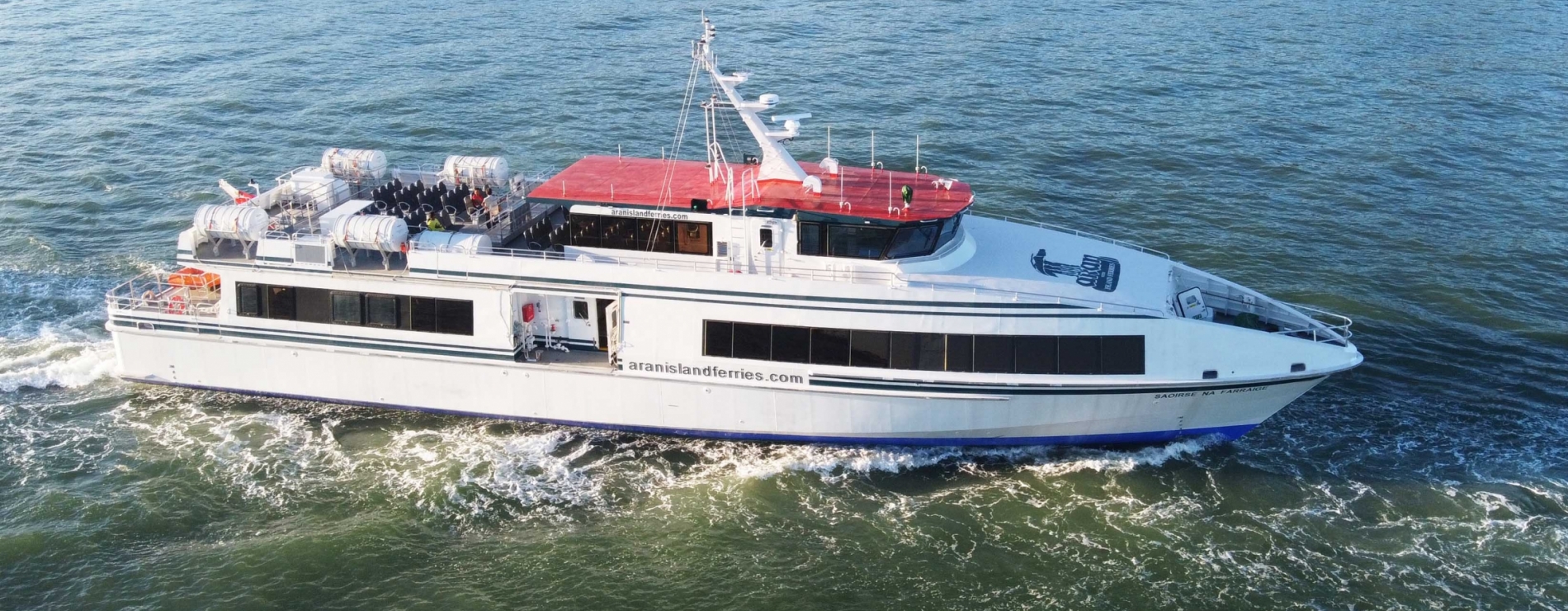
40m Passenger Ferry
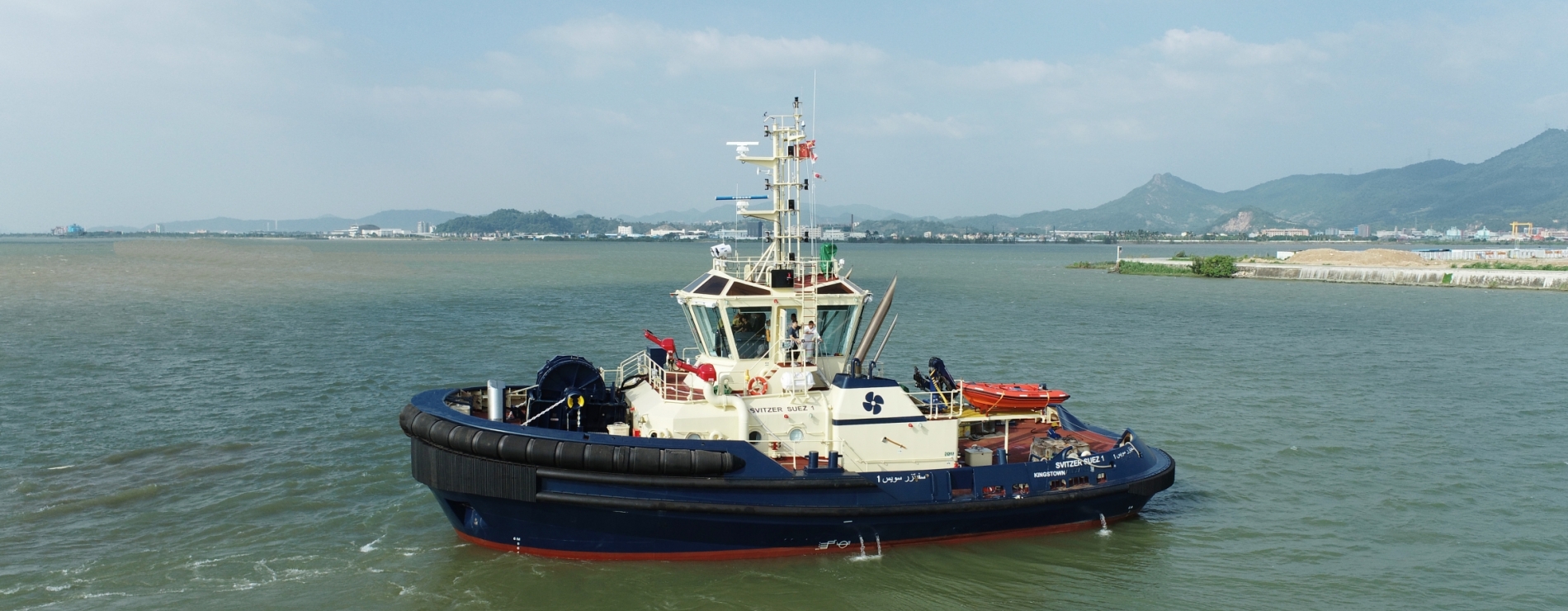
RAstar 2800-CL
A new addition to the Cheoy Lee tug line up, this is a beamy 28m escort tug, offers a compact, cost effective but highly capable solution. Accommodating 10 crew in MLC2006 compliant accommodation, the RAstar 2800-CL can be equipped with a range of propulsion and deck machinery configurations.

16M Line Boat
Designed specifically for a coal mining port in in Queensland, Australia, this heavily build vessel is the smallest Robert Allan designed vessel in our range. Powered by a single diesel and fixed pitch propeller in a steerable nozzle, manoeuvrability and bollard pull is impressive.

36m Crew Boat
The 36m Crew Boat was designed by the American wing of Incat Crowther, who established their name with multi-hull designs, but have since amassed significant experience in the design of offshore monohulls. ABS classed 36m vessel is powered by triple diesel engines. 50 tonnes of cargo can be carried on a 94m2 timber clad deck, and 70 personnel plus ten crew can be accommodatded.

40m Crew Boat
A development of our Incat Crowther 36m Crew Boat design, the 40m offers increased accommodation space for 80 service personnel and increased cargo carrying capacity. Conventional fixed pitch propeller drives offer speeds up to around 30 knots.

16.5m GRP Water Taxi
Developed using our successful 16.5m Composite ferry hull, this tourism boat for Macau was given a makeover by Australian industrial designer David Bentley. Twin Volvo IPS drives ensure quiet and efficient propulsion, pleasing both the tourists and operator alike.
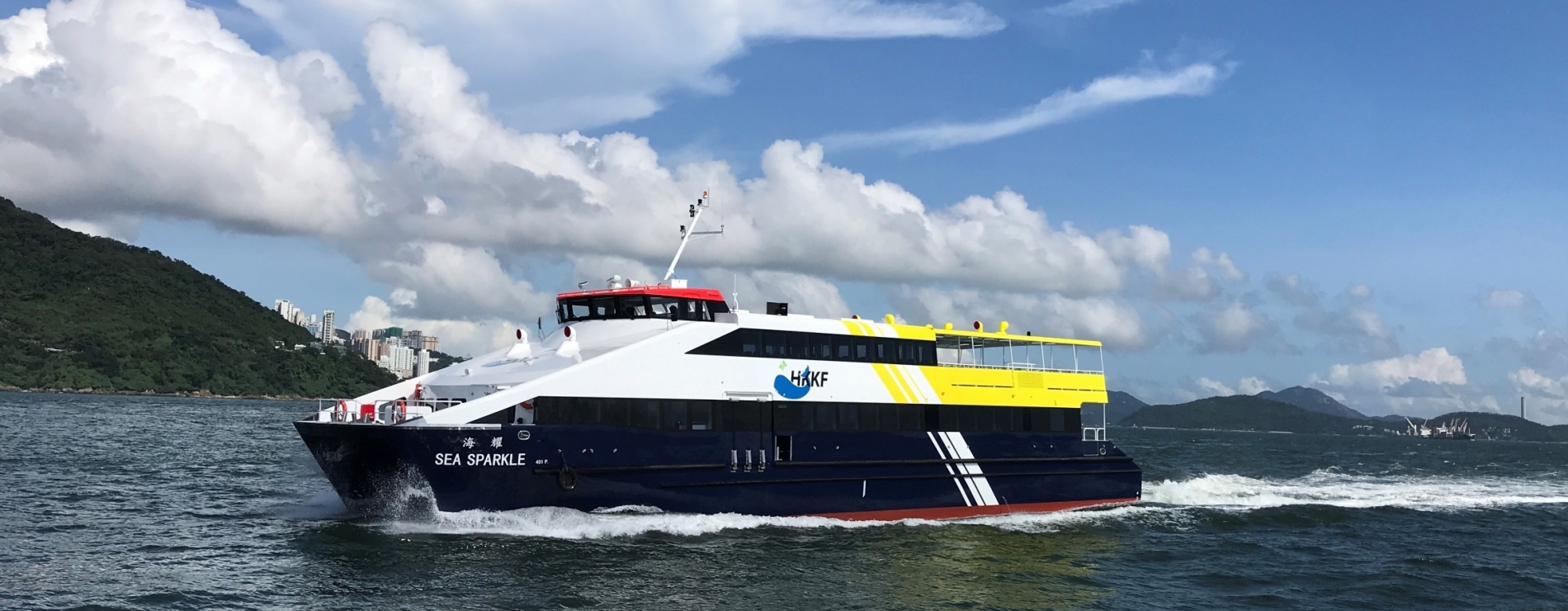
28-32m GRP Catamaran
An adjustable hull mould gives us the flexibility to offer this Incat Crowther design at varying lengths to suit the requirement. At 32m, the vessel can carry 400 passenger on two decks. The vessel is widely used on ferry routes within Hong Kong.

27m Crew Transfer Vessel
The first product of Cheoy Lee's collaboration with UK design firm BMT, the pairing has now produced eight CTV designs for European and Asian markets. The 27m is powered by quad Volvo IPS drives, giving good operational efficiency and impressive bollard push capabilities, and important attribute when pressing up against offshore windfarm installations in unfriendly sea conditions to facilitate safe crew transfer.

23m Crew Transfer Vessel
Twin Servogear controllable pitch propellers propel these aluminium CTVs to over 25 knots. The fine bows, deep hulls and accommodation situated well aft ensure comfort for the 24 offshore service personnel. The 45m2 cargo deck forward allows 12.5 tonnes of containerised cargo to be transported.
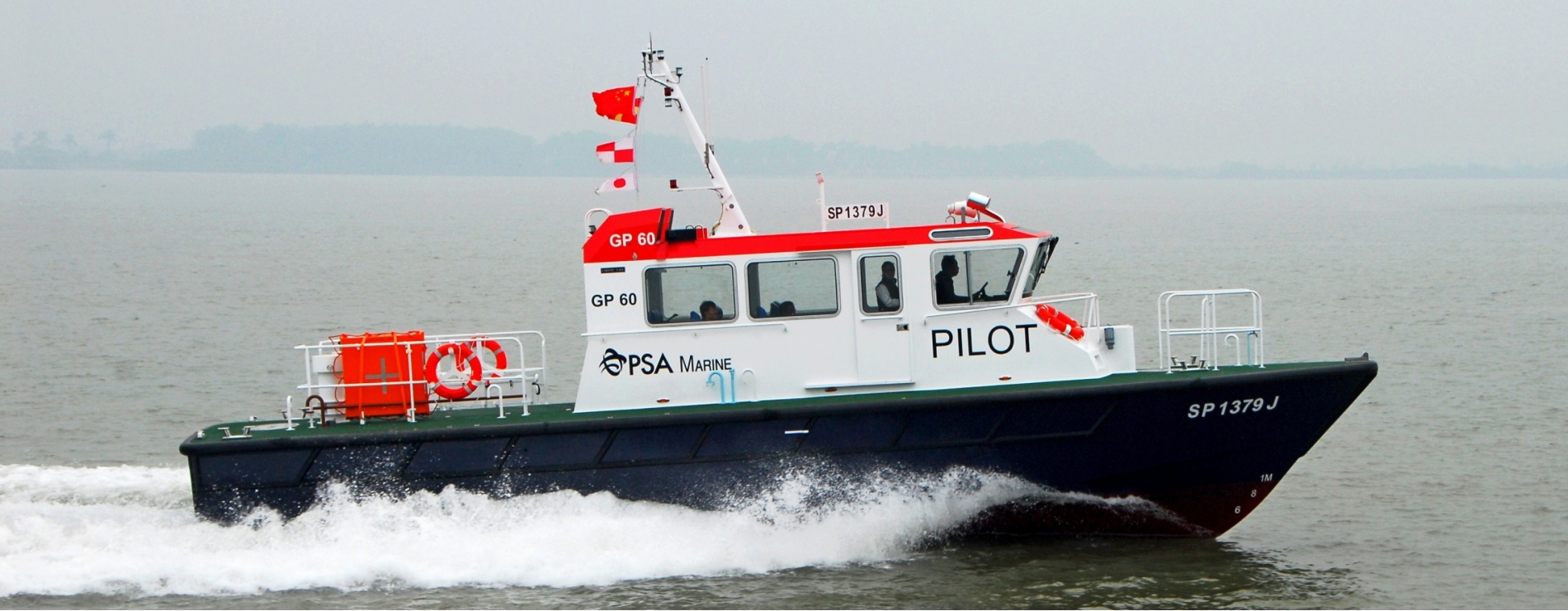
15m GRP Pilot Launch
Constructed with a robust foam cored, resin infused GRP hull, performance and ride comfort from this hull form is good. Powered by twin diesels, driving two outward turning propellers, the vessels are able reach a top speed of over 25 knots. The main deck has been fitted out to provide seating for eight pilots, as well as the captain and one crew member. Below decks there is a head and a gallery.
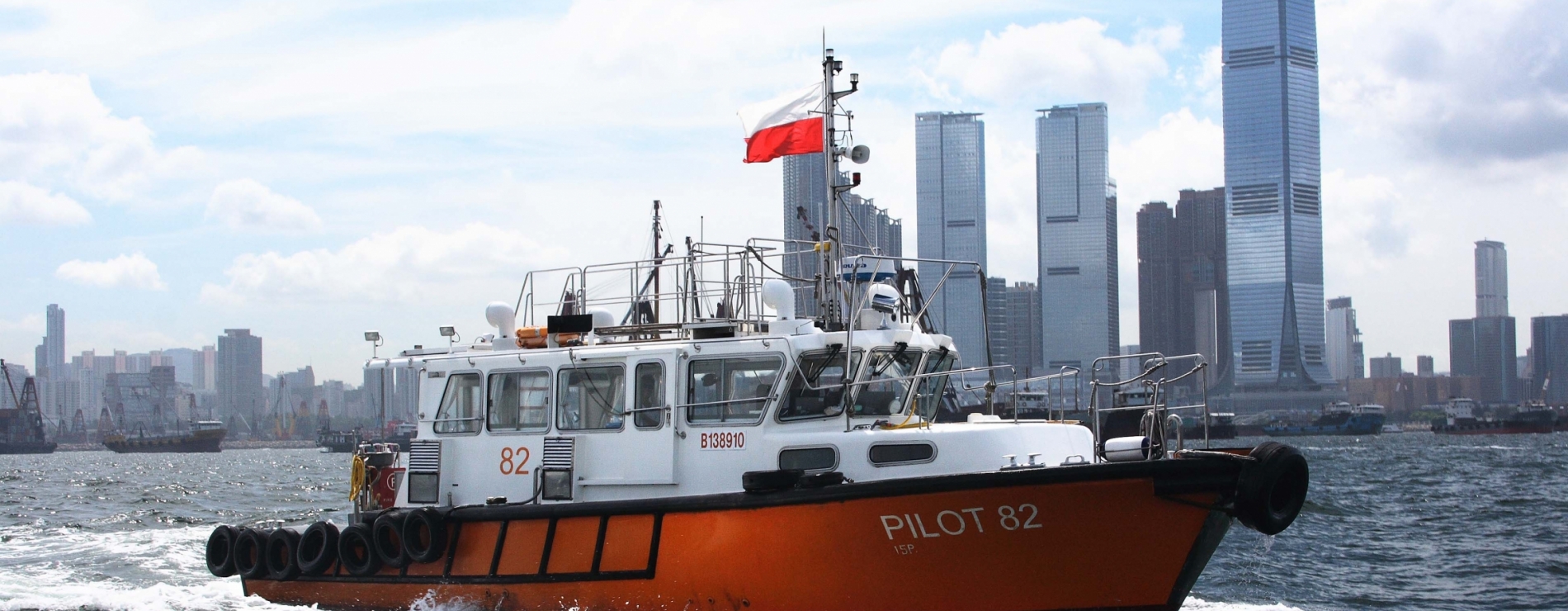
13.7m Pilot Launch
A versatile design, available in several different configurations depending on requirements. The semi-displacement round bilge hull is effcient, and offers a comfortable ride for the occupants.

38m Catamaran
An exciting new design from the drawing board of highly acclaimed multihull designers Incat Crowther, the carbon/composite structure and latest evolution hull form yield exceptional fuel efficiency. The design is engineered to be hybrid ready to further enhance fuel economy while carrying up to 450 passengers on two decks.

Z-Tech 5000
Incorporating the best handling and operational characteristics of Z-drive tractor tugs and Azimuth Stern-Drive (ASD) tugs, Z-Tech tugs are extremely capable. More than 80 Z-Tech tugs in a range of size and bollard pull configurations are now in service, with more than half of this global fleet being constructed by Cheoy Lee.

Z-Tech 6000
A versatile tug typically driven by a pair of Caterpillar 3516 diesel engines, coupled to two Schottel Rudderpropellers. All Cheoy Lee Z-Techs are built to Lloyd's Register class with the notation +100A1 Tug, +LMC, UMS.

Z-Tech 7000
Z-Tech 7000 ASD is a powerful tug fitted with two engines and azimuthing thrusters to provide a bollard pull of around 70 tonnnes. All the Cheoy Lee Z-Techs are built to Lloyds Register class with the notation +100A1 Tug, +LMS, UMS.
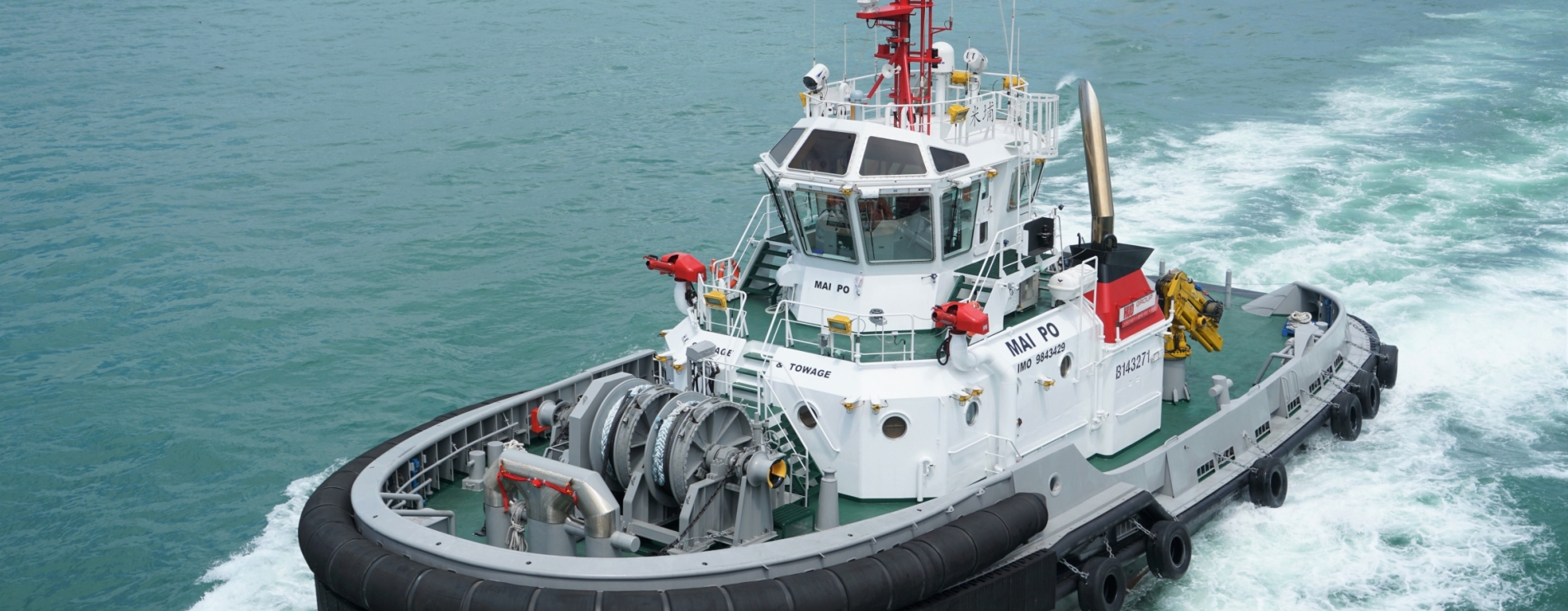
RAstar 3200-CL
The unique hull form of RAstar tugs increases crew safety and comfort to enable operation in conditions previously deemed unworkable. The sponsoned hull form, proven in both model and full-scale testing, provides enhanced escort towing capabilities and seakeeping performance. Motions and accelerations are less than half those of comparable sized tugs.
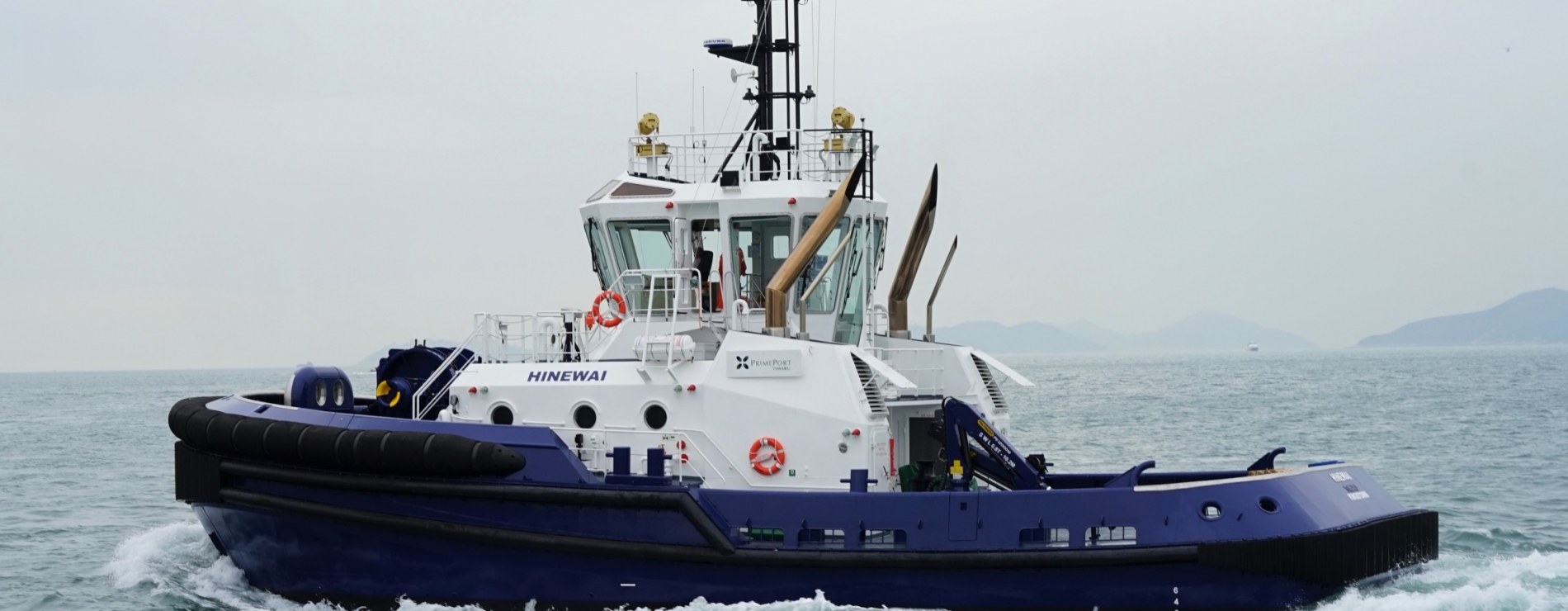
RAmparts 2500-CL
The RAmparts 2500-CL represents an evolution from a two vessel order for New Zealand delivered in 2015, where shorter overall length was advantageous for safe manning regulations. This compact new RAmparts 2500-CL model packs impressive power and versatility, and is designed for operation by a small crew, although still with MLC2006 compliant accommodation for 8 crew. Construction is to Lloyds Register, with the notation 100A1 Tug, LMC, UMS, *IWS, Restricted Service, with fifi options available. With standard propulsion, Cheoy Lee offers bollard pulls of 50 and 60 tonnes, but optional...
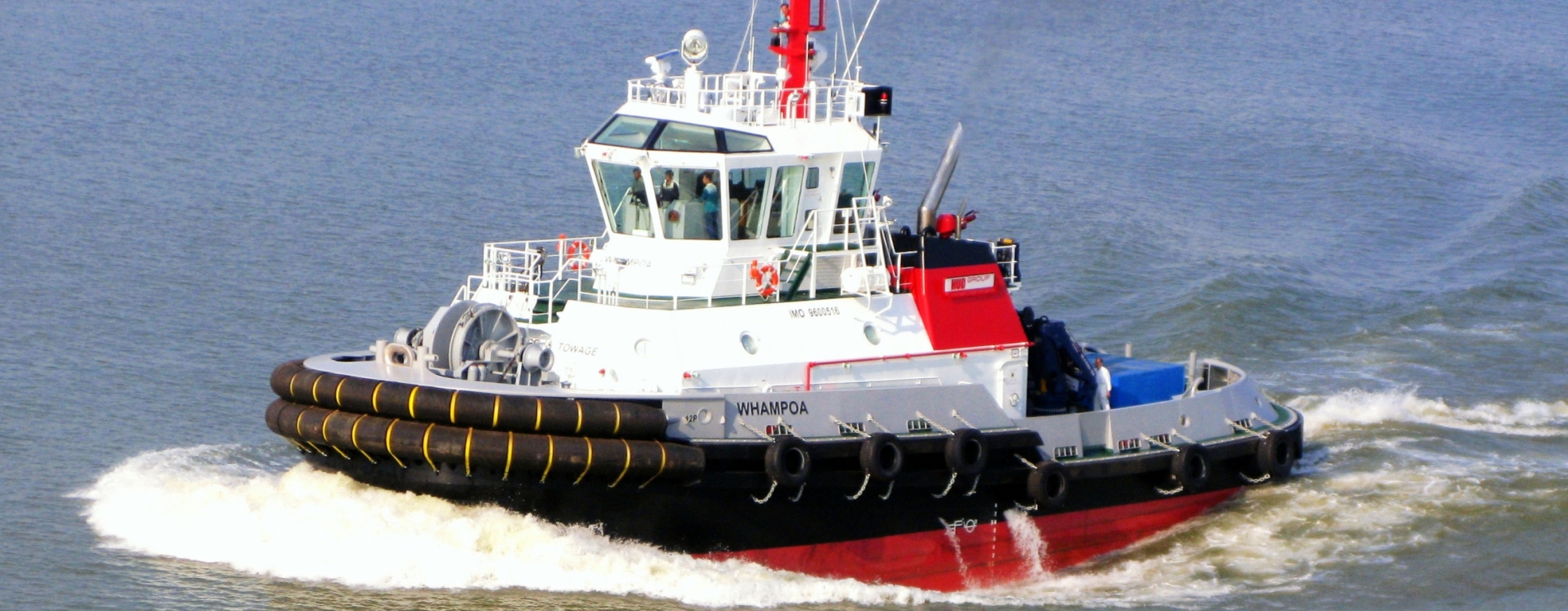
RAmparts 3000-CL
The RAmparts 3000-CL can accommodate eight crew. Deck machinery can be selected to meet operators needs. Construction is to Lloyds Register classification, with the notation + 100A1 Tug, +LMC. Propulsion is by twin Caterpillar or Niigata engines driving Rolls Royce, Schottel or Niigata Z-drive propulsion units.

RAmparts 3200-CL
The RAmparts 3200-CL is a variation of Robert Allan's Ramparts 3200 designed specifically for Cheoy Lee. A range of engine options, including Niigata and Caterpillar offer power ranging from 2250hp to 3151hp per engine. The tugs offer excellent maneuverability, a top speed of 12.5 to 13 knots and bollard pull figures of 65 to over 75 tonnes depending on engine selection. A complement of 12 crew members can be carried, with accommodation on the main and lower decks. Deck gear can be prescribed by the client, to include towing winches, hooks and bitts, as required. A fixed arm davit for...

The Rotor®tug distinguishes itself from conventional ASD, tractor or Voith designs by using three azimuth propulsion units, oriented in a triangular configuration. Manoeuvrability is superior to the conventional designs, with enhanced safety during towing and escort operations. Other benefits include an added level of redundancy with the triple engine and thruster combination and higher bollard pull in all directions. As the 80-32 series name implies, the 32 metre tug delivers a bollard pull of over 80 tonnes, both ahead and astern, with a free running speed of 13 knots. 6 crew can be...
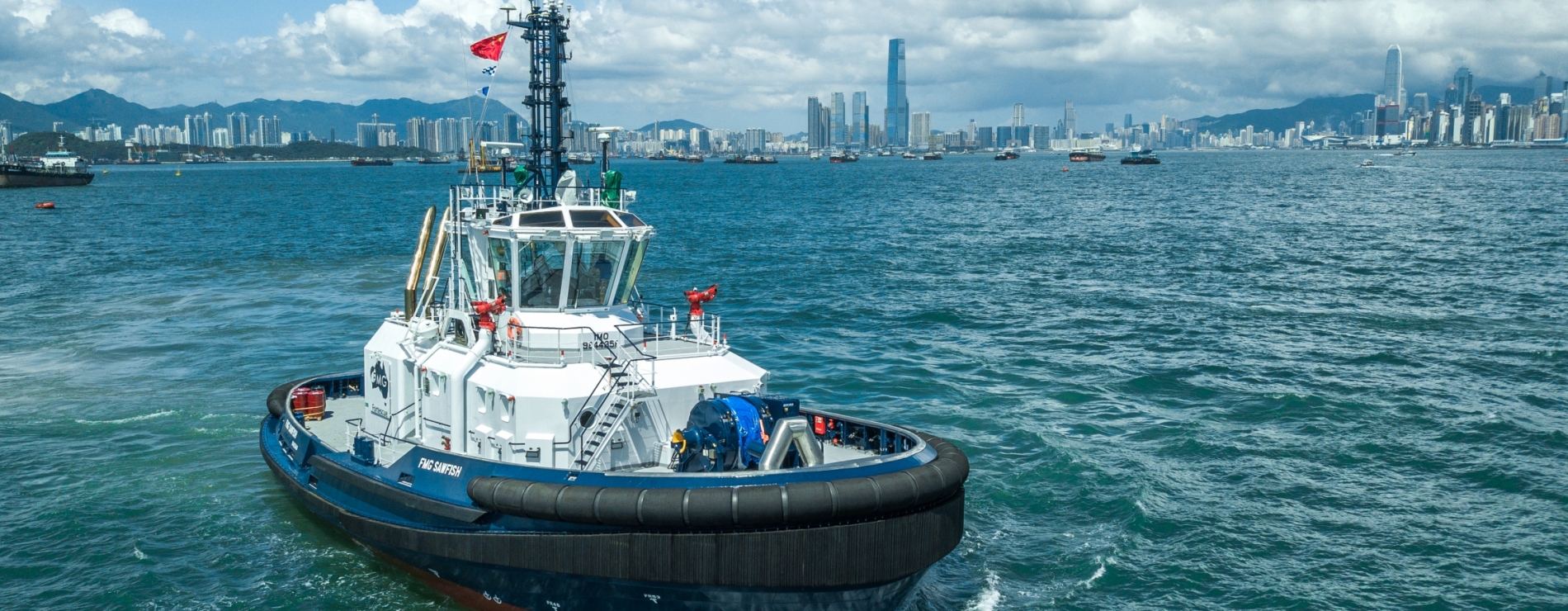
The “W” designation, for “wide”, further enhances the stability and capabilities of our ART 80-32 Rotortug. The triangular propulsion configuration with two thrusters forward and one aft offer exceptional manoeuvrability.

WATCH VIDEO

- New Sailboats
- Sailboats 21-30ft
- Sailboats 31-35ft
- Sailboats 36-40ft
- Sailboats Over 40ft
- Sailboats Under 21feet
- used_sailboats
- Apps and Computer Programs
- Communications
- Fishfinders
- Handheld Electronics
- Plotters MFDS Rradar
- Wind, Speed & Depth Instruments
- Anchoring Mooring
- Running Rigging
- Sails Canvas
- Standing Rigging
- Diesel Engines
- Off Grid Energy
- Cleaning Waxing
- DIY Projects
- Repair, Tools & Materials
- Spare Parts
- Tools & Gadgets
- Cabin Comfort
- Ventilation
- Footwear Apparel
- Foul Weather Gear
- Mailport & PS Advisor
- Inside Practical Sailor Blog
- Activate My Web Access
- Reset Password
- Customer Service

- Free Newsletter


What You Can Learn on a Quick Test Sail

Cabo Rico’s Classic Cutter

Bob Perrys Salty Tayana 37-Footer Boat Review

Tartan 30: An Affordable Classic

Preparing Yourself for Solo Sailing

Your New Feature-Packed VHF Radio

Preparing A Boat to Sail Solo

Solar Panels: Go Rigid If You have the Space…

Shoe Goo II Excels for Quick Sail Repairs

When Should We Retire Dyneema Stays and Running Rigging?

Rethinking MOB Prevention

Top-notch Wind Indicators
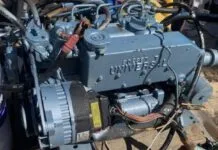
Worship Your Universal M-Series Diesel With the Marinized Kubota Block

Taking Care of Your 12-Volt Lead-Acid Battery Bank

Hassle-free Pumpouts

What Your Boat and the Baltimore Super Container Ship May Have…

Battle of the Teak Cleaners — Snappy Teak-Nu vs. Star Brite

New Seacocks for the Offshore Sailor

Bottom Paint Care


Quick and Safe Sail Cleaning

Are E-bikes Worth the Extra Weight and Cost?

How to Handle the Head

The Day Sailor’s First-Aid Kit

How to Select Crew for a Passage or Delivery

Re-sealing the Seams on Waterproof Fabrics

Waxing and Polishing Your Boat

Reducing Engine Room Noise

Tricks and Tips to Forming Do-it-yourself Rigging Terminals

Marine Toilet Maintenance Tips

Learning to Live with Plastic Boat Bits
- Sailboat Reviews
Cheoy Lee Offshore 41
An innovative ray richards design built by the earliest asian yard is a rock solid cruiser, but with a lot of teak to maintain as well as potentially troublesome metalwork..
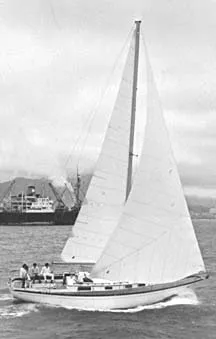
Cheoy Lee Shipyards of Hong Kong was one of the first molders of fiberglass boats in Asia, constructing sailboats for export to the US in the early 1960s. It introduced its first model, the Bermuda 30, in 1963. By 1965 it offerred 11 different models.
The company enjoyed a reputation as one of the better builders of offshore boats, characterized by traditional designs and the extensive use of wood. Teak hulls were offered as an option, decks were usually planked with teak, spars were Sitka spruce, and interior joinerwork was all teak.
Though the company developed a reputation for building solid hulls and decks, like many Asian builders of the period it also had a reputation for manufacturing lower quality accessories—winches and other stainless steel and bronze components were fabricated in the company’s shop, and were considered inferior to mainstream US and European hardware because of a tendency to corrode.

One Californian went so far as to order a boat delivered without mast, rigging, or winches so he could install higher quality gear.
Wiring systems also were prone to corrosion, especially those on exterior lights, so owners are often frustrated in attempts to maintain functional circuitry.
Design Naval architect Raymond H. Richards was commissioned by Cheoy Lee to design the Offshore 41, which replaced the classic Phil Rhodes-designed Reliant 40 in the company’s line-up.
Richards first established himself as a corporate designer in Seattle. In 1961 he became the first architect to design a fiberglass hull that met Lloyd’s construction standards. He was responsible for 10 Cheoy Lee designs, including the 39, 32 and 38-footers, and several Ranger and Pacific sloops.
By the time he accepted the commission for the Offshore 41 in 1972, he had abandoned the rigors of the corporate world for private practice, and moved to Avalon, on Catalina Island. These days he operates from a studio in Newport, California, where he has designed, among other vessels, a commercial passenger boat called the SWATH (Small Water Area Twin Hull) that is characterized by buoyant, sub-surface struts that produce a smooth, stable ride.
The Offshore 41 was conceived as a 40-footer but grew to 40′ 11″, just 2″ longer than the Reliant, but with a significantly different underwater shape.
“We were looking toward a more updated offering, both in style and performance, giving only a slight nod to the now infamous IOR,” Richards said of the re-design.
It was offered in sloop, yawl, and ketch configurations, though the sloop is the best performer of the three. Sail area for the sloop is 833 sq. ft., compared to 863 and 880 sq. ft. for the yawl and ketch, respectively. The sail area/displacement ratio (SA/D) for the sloop is 17.5, typical of cruisers of this vintage; the SA/D is 18.1 for the yawl, 18.4 for the ketch.
The displacement/length (D/L) ratio of 275 is on the high end of the moderate scale, and the ballast/displacement ratio is 41%. Richards describes the boat as being “stiff as a church.”
A radical departure from many cruisers of this era was the design of the keel. The traditional full keel was replaced by a 6′ deep cruising fin in which the forefoot is cutaway. The rudder is attached to a skeg.
The first boats were commissioned in 1972, and the production run produced about 100 boats.
Construction The Offshore 41 was designed to meet Lloyd’s specifications, and Cheoy Lee marketed it as meeting that standard; however, “there was not a Lloyd’s inspector on the premises during construction,” Richards said.
Hulls of the Offshore 41 are solid fiberglass that Richards says are heavier than designed.
“They (the builders) took a lot of license with the drawings,” he said, describing a trial-and-error method of adding layers of fiberglass and resin until the boat floated on its designed waterline. The process may have inadvertently produced a thicker, heavier hull than intended.
Richards’ lamination schedule for the hull was not followed by Cheoy Lee, he said, instead calling for six plies of 2-ounce mat and an additional six plies with widths graduated to produce a taper at the hull/deck joint. It is unusual not to use woven roving, which builds up thickness much quicker than just mat. In any case, Richards said that Cheoy Lee assured him the boat was built to Lloyds standards.
The deck, cockpit and cabin sides were cored with mahogany encapsulated with skins comprised of two layers of 2-ounce mat. The deck was overlaid with 3/8″ teak planking.
“The hull/deck joint is an inner facing flange forming a shelf onto which the deck was laid in wet mat and through-bolted,” Richards said. “The joint is a combination of resin and mat to prevent leaks. The teak toerail, rabbeted to take the thickness of the deck, is bolted through the deck and shelf. This is a method I created with the Pacific 30 and have used ever since. It has proved itself in both labor saving construction and structural integrity.”
The company replaced solid fiberglass stringers he designed with “joinerwork flats and aprons,” so berths and cabinetry act as hull stiffeners. Veteran owners of bluewater boats related no problems with hull flexing or oilcanning.
Bulkheads are “dropped in and bolted to related webs and floors, and bolted at the tops of the floors and glassed to the hull.”
The bottom consists of a molded grid system that provides structural support for the hull, framework for flooring, and a cavity for the internal keel. Ballast is an 8,700-pound slurry of lead and concrete; the top of the keel also functions as tankage for 50 gallons of fuel, small for extended cruising. Owners report fuel consumption of less than 1 gallon per hour with the Perkins 4.108 turning at 2,500 rpm. As a consequence, an optional 40-gallon fuel tank was offered under the cockpit. Water tanks are below the cabin sole forward of the engine and in tanks port and starboard aft of the galley.
In typical Richards fashion, the engine was mounted below the cabin sole amidships on solid fiberglass beds. Though that’s an excellent location for keeping weight out of the end of the boat, the arrangement is criticized by several owners, one of whom complained that, “The flywheel brings up bilge water and requires the construction of a metal shield to prevent continuous starter and alternator malfunctions.”
Like many boats of this era, the Offshore 41 was susceptible to blistering on the bottom and rudder. Owners report blisters ranging in size from “quarter-sized blisters I repair every spring,” to “several larger than my hand on the rudder that required a $2,500 repair.”
One owner told us that his boat survived Hurricane Hugo with substantial damage, “but the strength of the components kept it in good structural shape.”
Deck Unless a used boat has been retrofitted with modern winches, turning blocks and rope clutches, skipper and crew will find themselves hoisting and trimming sails the old fashioned way.
Original equipment included four sheet winches in the cockpit and two at the mast for halyards. This arrangement is adequate for daysailors, but we’d place a high priority on moving halyards and sail controls to the cockpit for offshore work.
All three models of the boat have the same 9′ 11″, T-shaped, cockpit with the helm well aft of the winches, and mainsheet controls located on a traveler forward of the companionway. It takes several steps to move from wheel to mainsheet, which mandates a wheel brake or autopilot when sailing shorthanded.
The cockpit has 6′ long benches with 14″ high back rests, and a 24″ high “saddle seat” for the helmsman. The width of the cockpit, however, makes it difficult to find a comfortable position on the rail from which to steer. Richards’ design incorporated seats with an elevated lip that provides better leg support than a flat surface, and a sloped sole that allows the helmsman to stand upright when the boat is heeled.
“We were on the cutting edge of ergonomic designs,” he said.
Proponents of ketch and yawl rigs crow about the ability to balance a sail plan, and they are good on a reach. But the sloop remains the most efficient rig, certainly upwind. Add the intrusion of the yawl or ketch’s mizzen mast in a cockpit (that is best suited to six persons), and the sloop becomes even more appealing.
Wide side decks allow for easy movement fore and aft. A teak handrail on the cabin top and double lifelines provide a high measure of security. Both the bow and stern pulpits have double stainless steel rails.
The Sitka spruce main mast has conventional single spreaders while the mizzen has swept back spreaders.
Spruce masts on a used boat present three potential problems: they’re not as sturdy or weather-resistant as aluminum; they are prone to rotting at the base if water is allowed to stand; and, though they have eye appeal, they require varnishing at least once a year in most areas. One owner felt he had a new lease on life after coating the mast with Awlgrip; others told us they use white Z Spar enamel, which requires repainting every 4-5 years.
Teak decks also are a high maintenance item. Owners of the Offshore 41 say decks require frequent re-caulking; many reported leaks between the teak and fiberglass. And if the teak requires replacement, you’re looking at around 20 grand.
Belowdecks Compared to most cookie cutter boats with compartmentalized interiors, the 41’s interior has personality. Depending upon the size and age of the crew, it will either be ideal or totally unsuitable for extended cruising.
Richards designed an 18′ long, nearly wide-open cabin that provides sleeping accommodations for a crew of six, and seating for 6-8 at an 8′ diameter dinette.
Enclosed berths in the fo’c’sle are accessed by removing a panel in the dinette back. Berths are laid out in what Richards describes as a “toe-over-toe arrangement,” the port berth being higher than its counterpart, which eliminates the possibility of creating a second double berth. As an alternative, the space will work well for storage of tools, spare sails, and anchor rode, since the boat has no anchor locker.
“I saw the forward berths as a place to get a little private time away from the madding crowd, and for the same reason a place to read,” Richards said.
Also a bit unusual, especially for its time, is the skipper’s enclosed stateroom, located to starboard and aft of the head and saloon, which has a double berth to starboard and hanging locker.
Wide open quarter berths are located opposite to port; the lower serves double duty as a seat for the navigator; an upper folds out of the way against the hull when not in use.
All of the berths are at least 6′ 6″.
Because the boat was designed before the era of pocket-sized navigational instruments, the navigator has a large, hinged chart table on which to work. However, adding electronics may necessitate reconfiguration of a cabinet located outboard of the table.
Forward of the nav station, the galley is equipped with two stainless steel sinks, a gimbaled four-burner stove outboard, and a 11-cu. ft. freezer/refrigerator below a Formica counter. A cover fitted over the sinks increases the size of working surfaces to that of a typical small apartment, and there’s an abundance of storage cupboards and shelves.
The head is a one-room toilet and shower combination opposite the galley. Compared with more contemporary boats, it is smallish, though Richards describes it as having the “space an adult needs when he drops the soap.” The holding tank has a 50-gallon capacity.
Natural light flows in from eight ports and three hatches, doing its best to brighten the dark teak cabinetry and sole. Fresh air also circulates through two Dorades located over the saloon.
Performance Performance of the Offshore 41 is a function of the rig, skipper’s ability, and condition of the sails. Owners of sloops told us that their boats perform to weather as well as similarly sized boats, and sail at 5.5-6.5 knots in 10-15 knots of breeze; owners of two-masted boats say they are slower.
The sloop also points higher than the ketch or yawls, tacking through 85°-90°, while the others will tack through 100°-110°, at best.
All agree that the best performance is achieved when sailing at 120° to the apparent wind flying a genoa, when speeds reach 7.5-8 knots in 10- to 15-knot winds.
She also tracks well. The skeg helps in this regard.
Owners log 150-mile days; in the 70’s that was generally considered the standard for bluewater cruising.
Conclusions The Cheoy Lee Offshore 41 was conceived for use in offshore conditions, constructed to endure extended bluewater passages, and designed to provide a crew with comfort above and belowdecks. Though a typical used boat is at least 20 years old, we would consider a purchase with the following caveats: a) look for a boat with an aluminum mast or closely inspect a wood mast for rot and be prepared to maintain it; b) closely inspect the bottom for blisters and plan an annual inspection; c) closely inspect all electrical systems for corrosion and failures; d) carefully consider your crew requirements vis-à-vis the accommodations plan.
Boats sold new in 1977 for $63,500, FOB Seattle, and today used boats of that same year are selling for slightly more, depending upon upgrades and sails.
Raymond H. Richards, Naval Architect, PO Box 3271, Newport Beach, CA, 92663; 949/642-6592, [email protected].
RELATED ARTICLES MORE FROM AUTHOR
Interesting write up – we live aboard and cruise on our Cheoy Lee 41 “Avocet” which is a Frankenstein monster of the Offshore and Pedrick designs. My husband and I are on the hunt for more history on not only our vessel but also Cheoy Lee itself, and this article provided useful information. Thank you! Fair winds, ~ the crew of S/V Avocet (www.svavocet.com)
Great write up.. I have a 1977 RR offshore 41ketch “Sidartha”. Love the boat, its beautiful design, but it is endless upkeep.
Does anyone know if the choey Lee had additional ballast via a small hole port side near the propeller? Or know what that is there for. Seems a lot of water drains from that area on pull outs. Also any knowledge of a fiberglass tube encasing the shift. I have a small leak coming in under the battery box space under the gangway ladder.
We have a 41 Sloop version berthed in Cyprus. We are having real problems with our starter motor which is not repairable and cannot find a suitable replacement. I’d welcome any advice on a suitable replacement.
I’m trying to find a cross-section for the 1978 Offshore 41 Ketch ….to see what’s under the teak decking? I am looking for deck replacement alternatives.
Let me know what you find I’m not sure what I’m going to do about my decks I have a 78
LEAVE A REPLY Cancel reply
Log in to leave a comment
Latest Videos

Beneteau 423: What You Should Know | Boat Review

Buying A Sailboat Is Scary! Yacht Broker Interview

The Great Loop – The Basics

Bottom Paint Showdown – Six Paints, One Winner! (John Stone photo)
- Privacy Policy
- Do Not Sell My Personal Information
- Online Account Activation
- Privacy Manager

- My Cheoy Lee
- Tradition Series
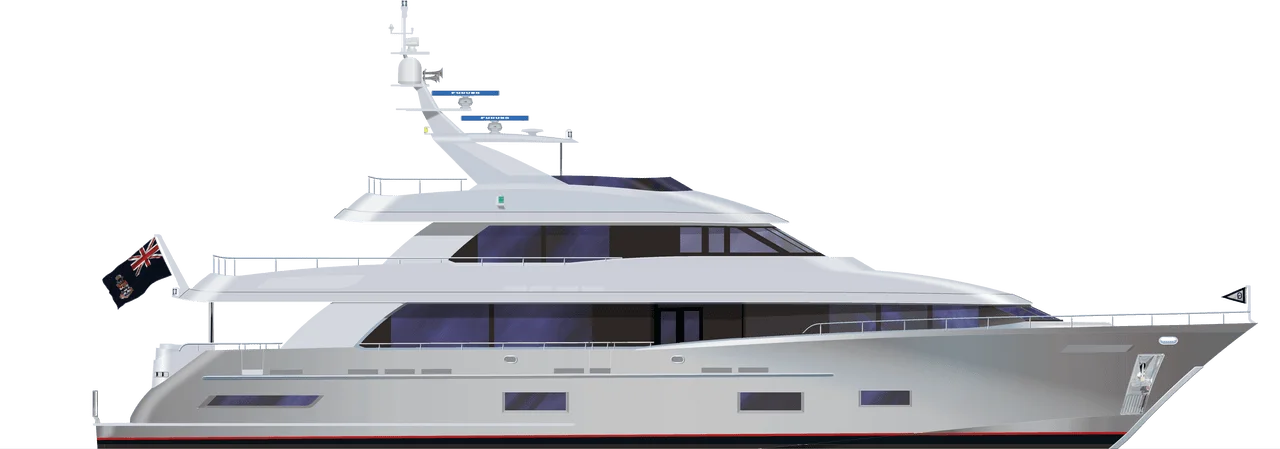
- Explorer Series
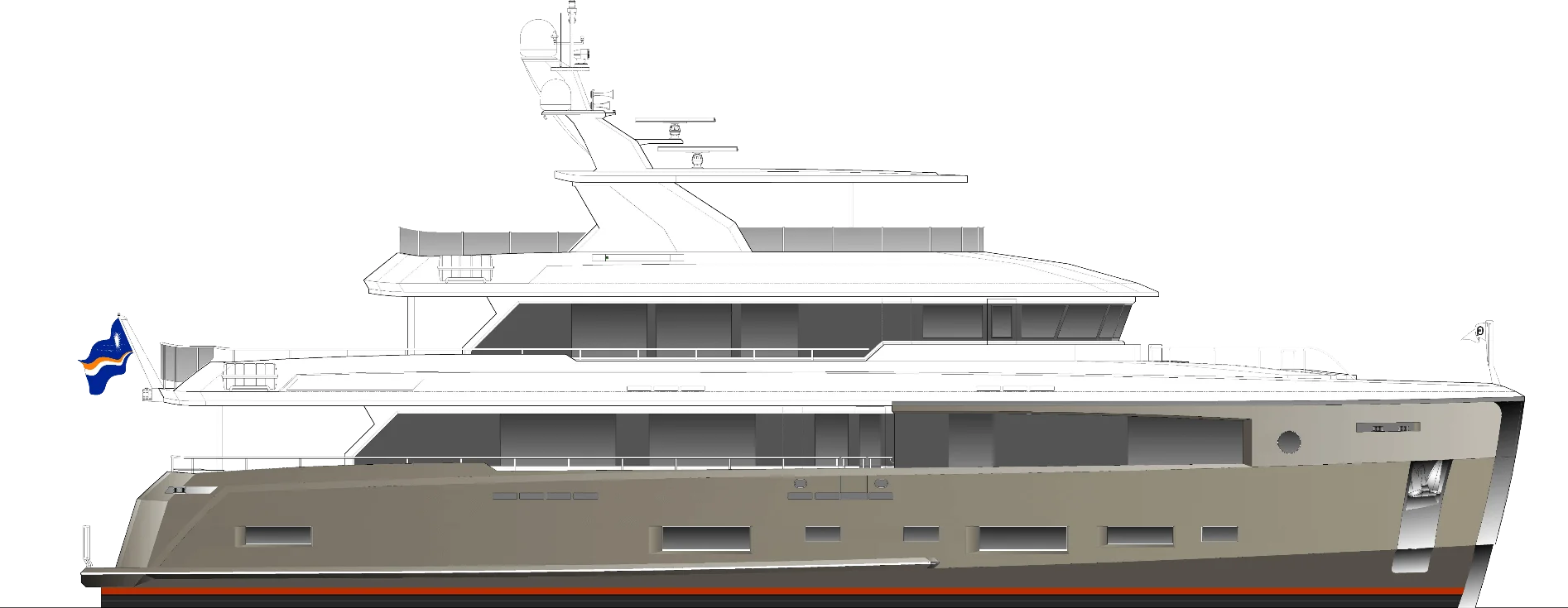
- The Shipyard
- Engineering & Construction
- Service & Warranty
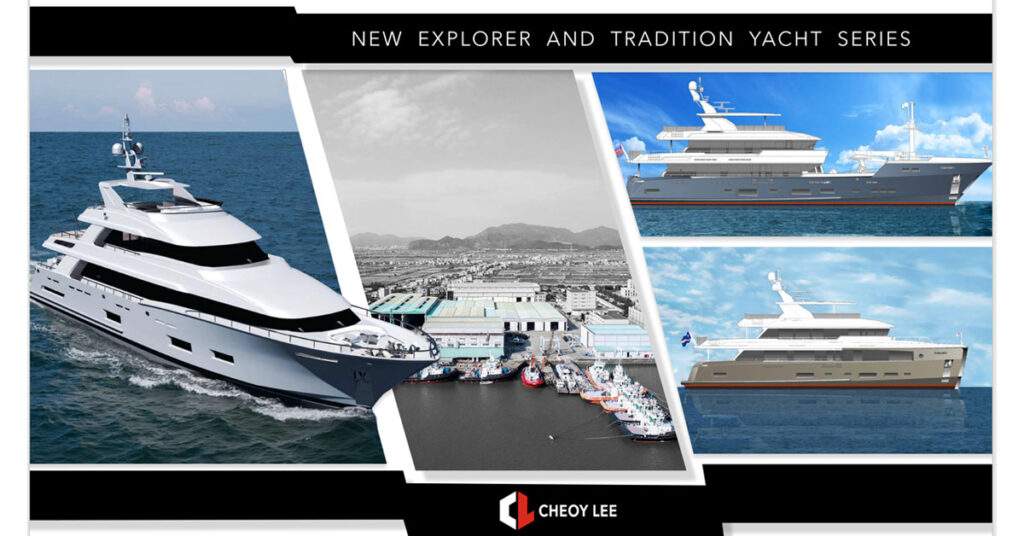
Cheoy Lee Unveils New Explorer and Tradition Yacht Series
Designed by an American naval architecture firm for American owners, these expedition and cruising motor yachts from 107’ to 132’ combine up-to-date styling and technology with over 150 years of bluewater boat-building experience.
Cheoy Lee Yachts , the luxury yacht division of leading international ship builder Cheoy Lee Shipyards, is proud to announce its new Explorer and Tradition lines. Designed by U.S. naval architecture firm Overing Yacht Designs to suit the needs and desires of American clients, Cheoy Lee’s Tradition and Explorer series yachts are constructed using advanced technology combined with the more than 150 years of traditional artisanship. Cheoy Lee has collaborated with Sylvia Bolton Design of Seattle to create fresh and comfortable interior designs for many of these new motor yachts.
The new Cheoy Lee Explorer series yachts are rugged expedition vessels built with full-displacement, steel hulls with round bilges, bulbous bows, commercial-level equipment, and long-range fuel capacities. Unique features include a tank deck that crew can use to transit the vessel from bow to stern. Each Explorer model is designed to be the perfect platform for any oceangoing adventure its owners can imagine. Complementing its highly practical work areas are spacious and luxurious owner and guest accommodations featuring a large flybridge lounge and an aft beach club that sustains the connection between the owner and the sea.
“What really defines the Cheoy Lee Explorer series is what they are capable of doing. Built to full class standards – Lloyd’s, RMI Yacht Code or the equivalent – they are true world-cruising yachts,” said Jon Overing, owner, Overing Yacht Designs.
The Cheoy Lee Yachts Explorer line includes the following models:
- 107 Explorer . Cheoy Lee Hull No. 5200 currently in build with an estimated delivery date of late summer 2022. Accommodating 10 guests and 6 to 8 crew, this five-stateroom yacht features a master suite on the bridge deck for sweeping panoramic views, as well as a VIP suite on the main deck. Crew quarters are exceptionally large and well-laid-out for a yacht of this size.
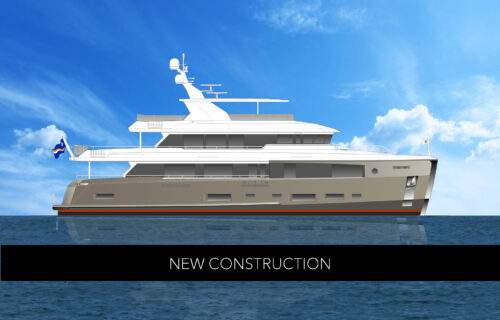
- 126 Explorer. Blending contemporary styling with stellar seakeeping abilities, this expedition yacht has a 26-foot beam that makes her feel more spacious than other yachts of her class. Accommodating 10 guests and 6 to 8 crew, she features a bridge-deck master stateroom, VIP and captain’s cabins on the main deck, and three guest suites on the lower deck.
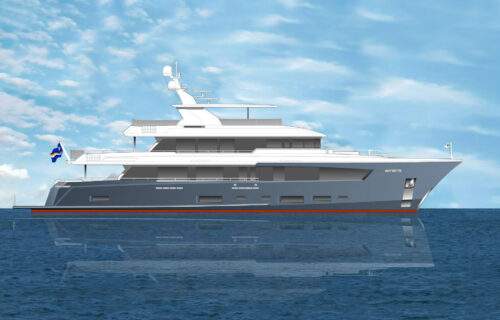
- 130 Explorer. Cheoy Lee Hull No. 5218 currently in build with an estimated delivery date of late summer 2022. With an operating draft of 7’ to 7.5’ and a fuel capacity of over 10,000 gallons, she is equally suited to global adventuring and island-hopping in The Bahamas. Accommodating 10 guests and 6 to 8 crew, she features a main-deck master and equivalent-sized guest suites that make her an ideal charter vessel.

- 132 Explorer. Designed for experienced owners who prefer the Aft House expedition yacht configuration, the 132 Explorer lets you store all your tenders and toys on the foredeck, out of the way. This four-deck yacht accommodates 10 guests and 6 to 8 crew. Her luxurious five-stateroom layout includes a comfortable full-beam master suite located amidships.

The Cheoy Lee Tradition series yachts deliver a fresh new look and feel for the tri-deck fiberglass megayacht. Combining semi-planing hull performance with luxury accommodations and Cheoy Lee’s outstanding seakeeping capabilities, these easy-to-maintain fiberglass yachts ensure that the journey is just as enjoyable as the destination. This is perfect vessel to start a new family tradition of comfortable and gracious cruising.
“Designed for the American yachtsman, the Cheoy Lee Tradition series brings luxury, style and functionality together,” Overing said. “Powered by twin CAT C32 ACERT diesel marine engines, rated at 1,600 hp each, the 6,000-gallon fuel capacity will offer excellent range, depending on the speed.”
The Cheoy Lee Tradition line currently includes the following model:
118 Tradition . Delivering a 21-knot cruising speed, this luxury megayacht is full of inviting social gathering spaces, including an enclosed skylounge, which is rare on a yacht of her class. The main deck encompasses a country kitchen and master suite with 180-degree panoramic views. Two VIP suites and two twin suites round out the accommodations for 10 guests, making the 118 Tradition an ideal yacht for charter operations. Her 6-foot draft also makes her a great boat for The Bahamas.

“Featuring Jon Overing’s proven hull designs, with construction that draws on five generations of our family’s shipbuilding expertise coupled with the latest technological advances, these two luxury yacht lines are designed for the discriminating buyer. Interior Designer Sylvia Bolton also is a delight to work with. Our ability to bring you the best quality, value and service is what we build our reputation on,” said B.Y. Lo, vice president, Cheoy Lee North America. “Please visit our display at the 2021 Palm Beach International Boat Show, IW 540-541, so we can show you the outstanding concepts behind the new Explorer and Tradition yachts.”
About Cheoy Lee
Over 150 years and five generations of uninterrupted shipbuilding, Cheoy Lee’s unwavering commitment to dependable products and service endures. Originating in Shanghai, China, Cheoy Lee Shipyards is the embodiment of the Lo family’s tradition to advance its craft, continually creating new chapters in the chronicle of this iconic institution. Benefiting from the shipyard’s world-renowned prowess in the commercial maritime sector. Cheoy Lee’s award-winning luxury yachts are prized for their seaworthiness, efficiency and range. For more information, please visit www.cheoyleeyachts.com .

This article appeared first on cheoyleeyachts.com.

- Privacy Overview
- Strictly Necessary Cookies
- 3rd Party Cookies
This website uses cookies so that we can provide you with the best user experience possible. Cookie information is stored in your browser and performs functions such as recognising you when you return to our website and helping our team to understand which sections of the website you find most interesting and useful.
Strictly Necessary Cookie should be enabled at all times so that we can save your preferences for cookie settings.
If you disable this cookie, we will not be able to save your preferences. This means that every time you visit this website you will need to enable or disable cookies again.
This website uses Google Analytics to collect anonymous information such as the number of visitors to the site, and the most popular pages.
Keeping this cookie enabled helps us to improve our website.
Please enable Strictly Necessary Cookies first so that we can save your preferences!

IMAGES
VIDEO
COMMENTS
A new addition to the Cheoy Lee tug line up, this is a beamy 28m escort tug, offers a compact, cost effective but highly capable solution. Accommodating 10 crew in MLC2006 compliant accommodation, the RAstar 2800-CL can be equipped with a range of propulsion and deck machinery configurations.
There are presently 60 yachts for sale on YachtWorld for Cheoy Lee. This assortment encompasses 3 brand-new vessels and 57 pre-owned yachts, all of which are listed by knowledgeable yacht brokers and boat dealerships predominantly in United States, Thailand, Canada, United Kingdom and Mexico. Models currently listed on YachtWorld range in size ...
Find Sail Cheoy Lee boats for sale in your area & across the world on YachtWorld. Offering the best selection of Cheoy Lee boats to choose from.
cheoy lee preowned sailboats for sale by owner. cheoy lee used sailboats for sale by owner. Home. Register & Post. View All Sailboats. Search. ... Cheoy Lee Offshore 48 Aft Cockpit- Bob Perry design: Length: 48' Beam: 14' Draft: 6' Year: 1980: Type: cruiser: Hull: fiberglass monohull: Engine:
Cheoy Lee Shipyard has been owned and operated by the same family for more than a century. As a building and a repair yard at Po Tung Point in Shanghai, Cheoy Lee began producing steam powered craft. After 1936, the business moved to what was then the British territory of Hong Kong. By the mid 1950's, the shipyard diversified into the production of teak sailing and motor yachts and the ...
Cheoy Lee's origins can be traced back to a family operated shipyard in Shanghai that opened in the late 1800's. In 1936, the family relocated the shipyard to Hong Kong, then a British colony, to build power cargo vessels. ... Sailboat "Mahjong", a 52' Sparkman & Stephens designed teak Bermudian yawl built in 1957, sailed from Hong Kong ...
132Explorer. Featuring an aft-house, the flagship on the Explorer line, blends American design with high tech and traditional craftsmanship. Discover. Cheoy Lee has a fleet of yachts, from their TransOceanic series to the Global models. Their newest entries, the Tradition and Explorer series will also be playing the globes blue Oceans.
2.6 m. Fuel. 11,127. US Gal. Range. 4,500. nautical miles. The 107 Explorer's fast-displacement hull, designed in collaboration with American naval architect Jon Overing of Overing Yacht Designs, features a rounded bilge and bulbous bow for optimal fuel efficiency. Powered by twin 750-bhp Cummins workhorse diesels, this bluewater explorer ...
The Cheoy Lee 44 is a moderate displacement cruiser with a low cabin top, a sleek profile and lovely lines overall. Cheoy Lee's strong owners' association, and the 44s comfortable layout and visual appeal make this a very viable and affordable cruising boat for anyone looking to coastal or bluewater cruise.
Cheoy Lee Shipyard Ltd.(HK) Designer: Robert H. Perry: KLSC Leaderboard. Auxiliary Power/Tanks (orig. equip.) Fuel: 125 gals / 473 L: Accomodations. Water: ... A Ballast/Displacement ratio of 40 or more translates into a stiffer, more powerful boat that will be better able to stand up to the wind. Bal./Disp = ballast (lbs)/ displacement (lbs)*100
416-639-1182. Cheoy Lee Pedrick 36. Rock Hall, Maryland. 1985. $39,900. If you are a boat enthusiast looking for a unique vessel, with beautiful lines, than the Odyssey II is the boat you have been looking for. Built in the Cheoy Lee Shipyard and designed by David Pedrick, the boat was first built in 1985. It has a hull type of Fin with rudder ...
The first boats were commissioned in 1972, and the production run produced about 100 boats. Construction The Offshore 41 was designed to meet Lloyd's specifications, and Cheoy Lee marketed it as meeting that standard; however, "there was not a Lloyd's inspector on the premises during construction," Richards said.
cheoy lee 132 Aft House. explorer. Drawing on Cheoy Lee's more than 100 years of shipbuilding experience and tradition, this quad-deck luxury expedition yacht is designed to give you uncompromised seaworthiness, comfort and self-sufficiency on long-range voyages. Whether you are transiting the Pacific or island-hopping in The Bahamas, she has ...
The OFFSHORE/EMPIRE 40 was created in an effort to reduce costs of contruction and design royalties of the RHODES RELIANT. Although from the same basic tooling, the OFFSHORE 40 has iron instead of lead ballast, and differences in other construction details. Sold as a sloop or yawl. In the mid 1970's, Cheoy Lee Yard built another OFFSHORE 40 ...
1980 Cheoy Lee 35. US$35,509. Sunnybrook Yachts | Chester, Nova Scotia. Request Info. <. 1. >. * Price displayed is based on today's currency conversion rate of the listed sales price. Boats Group does not guarantee the accuracy of conversion rates and rates may differ than those provided by financial institutions at the time of transaction.
Cheoy Lee's full displacement hulls have enviable long-distance ocean voyaging credentials. Sufficient speed. Historically, full-displacement vessels tended to be slow through the water, making up in seaworthiness what they lacked in speed.The image in everyone's mind was a 10-knot boat, but it doesn't have to be that way
Cheoy Lee. There are presently 60 yachts for sale on YachtWorld for Cheoy Lee. This assortment encompasses 3 brand-new vessels and 57 pre-owned yachts, all of which are listed by knowledgeable boat and yacht brokers predominantly in United States, Thailand, Canada, United Kingdom and Mexico. Models currently listed on YachtWorld vary in size ...
Cheoy Lee Shipyard Ltd.(HK) Designer: Raymond Richards: KLSC Leaderboard. Auxiliary Power/Tanks (orig. equip.) Fuel: 75 gals / 284 L: Accomodations. Water: 130 gals / 492 L: Sailboat Calculations ... Cheoy Lee Association Web Site: Download Boat Record: Notes. Also available as sloop, cutter, and yawl.
Blog Cheoy Lee Shipyards Is Installing Luxury Interiors Hand-Crafted by Italian Artisans in the First 130 Explorer Yacht The first Cheoy Lee 130 Explorer yacht is in its final phase of construction at Cheoy Lee Shipyards. The steel hull and aluminum superstructure are complete and the engines and machinery are in place. Now, the luxury custom….
Website and the CL Association started 1997. Welcome to our site. Our goal is to bring together Cheoy Lee Owners as well as all information related to the. Cheoy Lee Yachts, Cheoy Lee History, Restoration of Cheoy Lee's, and information on the. designers of the Cheoy Lee sail and power yachts. CHEOY LEE SITE Click Here.
Designed by an American naval architecture firm for American owners, these expedition and cruising motor yachts from 107' to 132' combine up-to-date styling and technology with over 150 years of bluewater boat-building experience. Cheoy Lee Yachts, the luxury yacht division of leading international ship builder Cheoy Lee Shipyards, is proud to announce its new Explorer and Tradition lines.
A boat with a BN of 1.6 or greater is a boat that will be reefed often in offshore cruising. Derek Harvey, "Multihulls for Cruising and Racing", International Marine, Camden, Maine, 1991, states that a BN of 1 is generally accepted as the dividing line between so-called slow and fast multihulls.
Cheoy Lee Shipyard Ltd.(HK) Designer: Raymond Richards: KLSC Leaderboard. Auxiliary Power/Tanks (orig. equip.) Fuel: 48 gals / 182 L: Accomodations. Water: ... A Ballast/Displacement ratio of 40 or more translates into a stiffer, more powerful boat that will be better able to stand up to the wind. Bal./Disp = ballast (lbs)/ displacement (lbs)*100